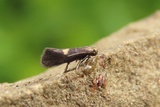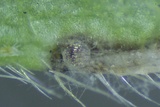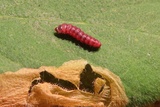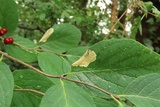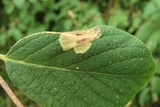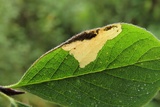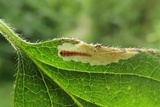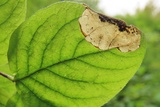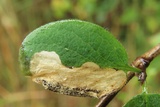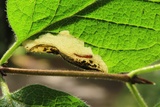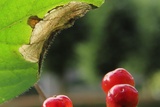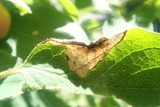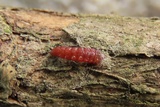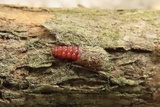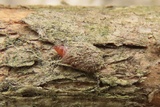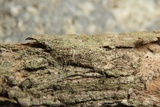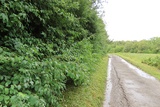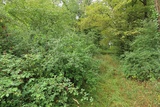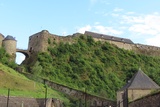Perittia herrichiella (Herrich-Schäffer, [1855]) Species
Last modified: Nov. 28, 2025, 5:37 p.m.
A new addition to the Belgian fauna in 2023 in NA and LX.
Details
- Classification
- Family: Elachistidae > Subfamily: Elachistinae > Genus: Perittia > Species: Perittia herrichiella
- Vernacular names
- Gevlekte kamperfoeliemineermot (NL)
- Status
-
Native
Distribution
Mine
The mine starts as a narrow corridor filled with black frass that strictly follows the leaf edge. Eventually each corridor widens into a whitish or beige blotch, which partially or completely 'engulfs' the initial corridor. Inhabited mines are found from July to August, in some cases into October.
Cocoon/pupa
Mature caterpillars leave the mine at the end of July and make a strongly camouflaged cocoon with gnawings and pieces of bark against a twig of the food plant, after which the imagos emerged in May of the following year.
The adults come to light and can probably be knocked out of the food plant around May–June.
Bionomics
The eggs are laid individually on the underside of the leaf margin of different species of Lonicera.
Flight periods
Its unclear of this species has 1 or generations a year, but adults can be seen from May to August.
Observed on
- Host plant (species):
- Lonicera xylosteum
The larva lives on different species of Lonicera, In our country most are on Lonicera xylosteum. Also rarely found on Symphoricarpus albus.
